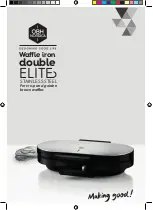
11
How the machine makes ice
There are two distinct cycles: Freeze and Harvest.
Freezing
: During the freezing cycle, the compressor pumps refrigerant, the fan motor blows air and the
water pump circulates water. When the batch of ice has been fully formed, the ice maker stops the
freezing cycle and begins the harvest cycle.
Harvest:
During the harvest cycle, the compressor is still operates, but the water pump stops. The hot
gas valve opens, diverting hot refrigerant gas into the evaporator. The gas warms the evaporator,
causing the cubes to fall, as a unit, off the evaporator and into the storage bin. The freezing cycle will
restart when all the cubes have been harvested. A complete cycle can take 15 to 40 minutes,
depending on water temperature and ambient conditions.
How the machine uses the water
The ice maker begins with a fixed charge of water that is contained in the water trough. As the water
flows to the freezing evaporator surface, the portion of water that does not contain mineral impurities will
freeze and stick to the ice cube mold. The water containing impurities falls back into the trough. During
the ice-making process, fresh water enters the water trough continuously as the water from the trough
freezes continuously on the evaporator.
Normal Sounds
Your new ice maker may make sounds that are not familiar to you. Hard surfaces like the floor, walls can
make the sounds seem louder than they actually are. The following describes the kinds of sounds that
might be new to you and what may be making them.
•
Ratting noises may come from the flow of the refrigerant or the water line, items stored on top of
the icemaker can also make noises.
•
The high efficiency compressor may make a pulsating or high-pitched sound.
•
Water running from the evaporator to the water bin may make a splashing sound.
•
As each cycle ends, you may hear a gurgling sound due to the refrigerant flowing in your ice
maker.
•
You may hear air being forced over the condenser by the condenser fan.
•
During the harvest cycle, you may hear the sound of ice cubes falling into the ice storage bin



































